
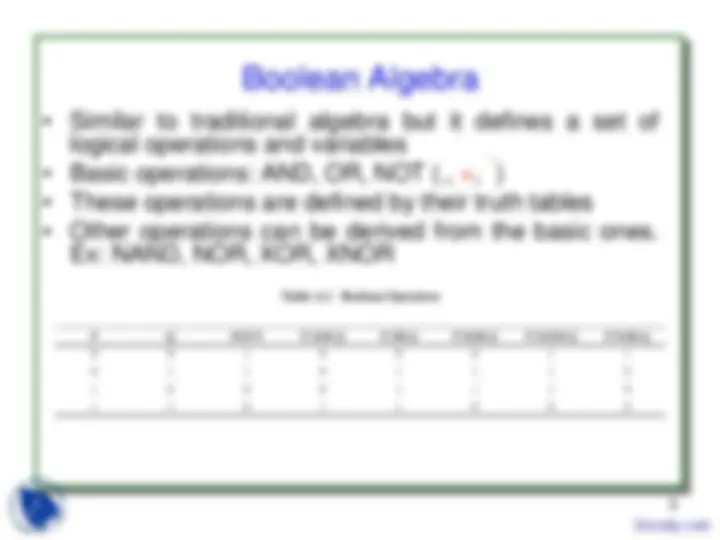
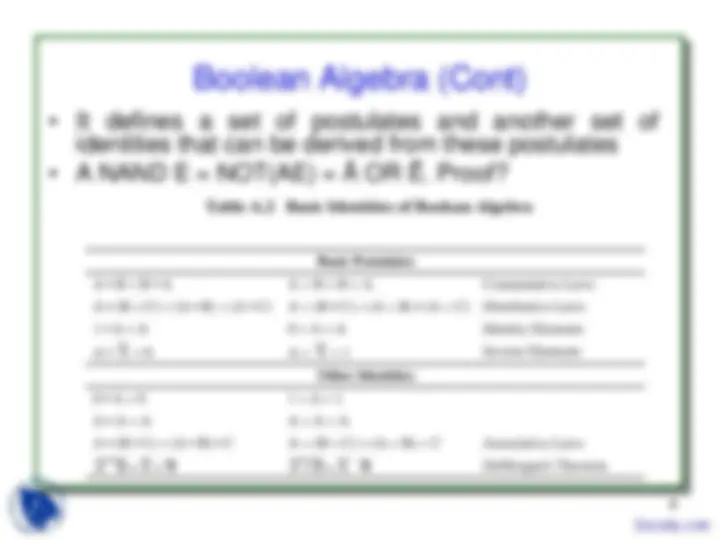
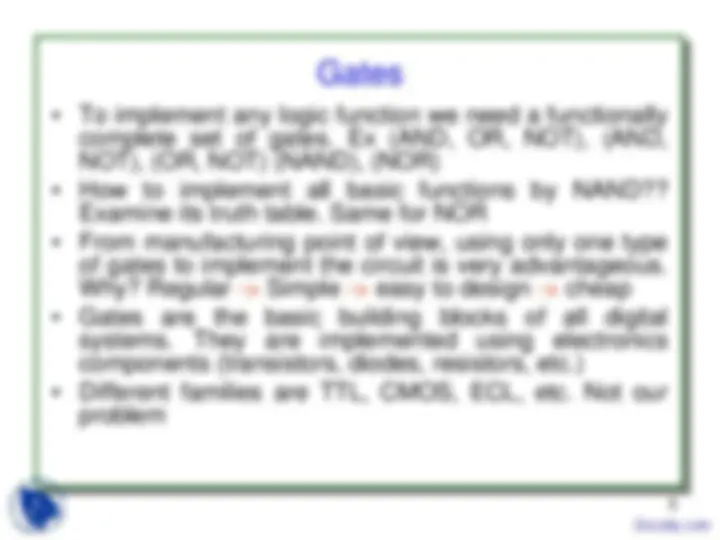
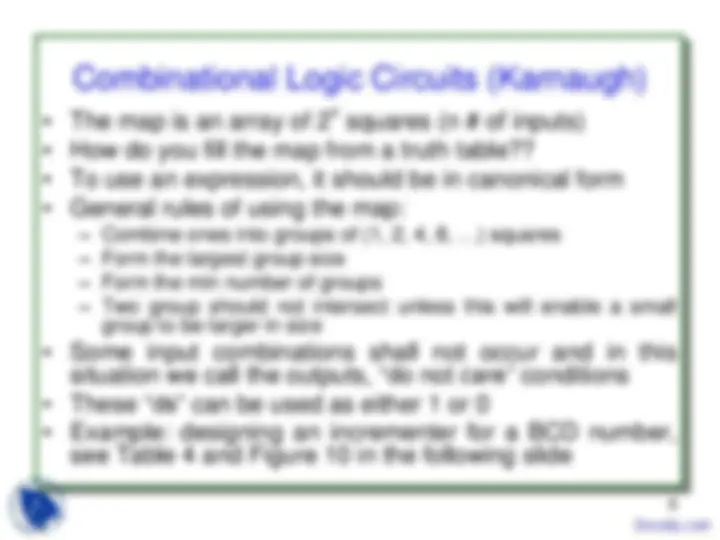
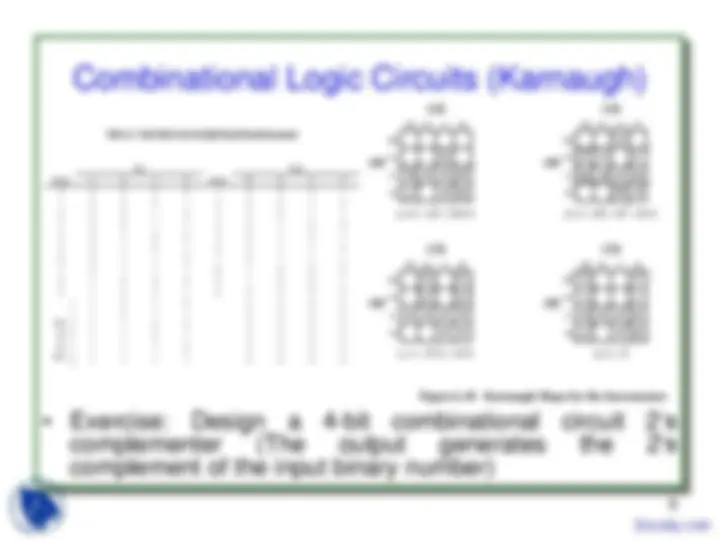
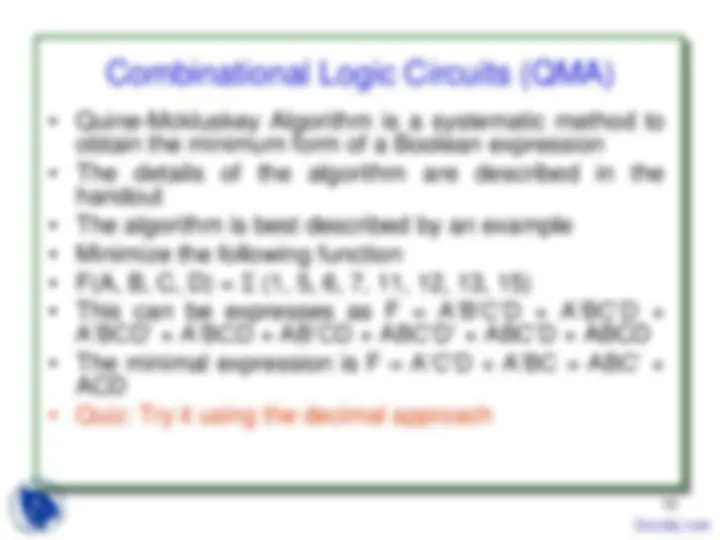
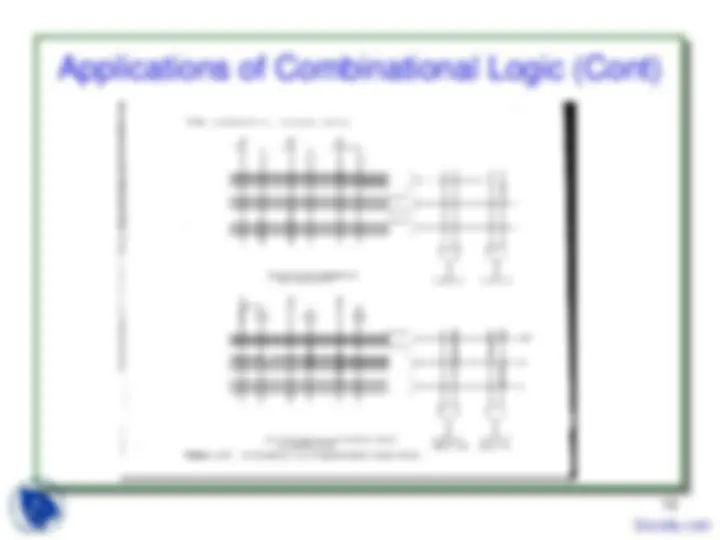
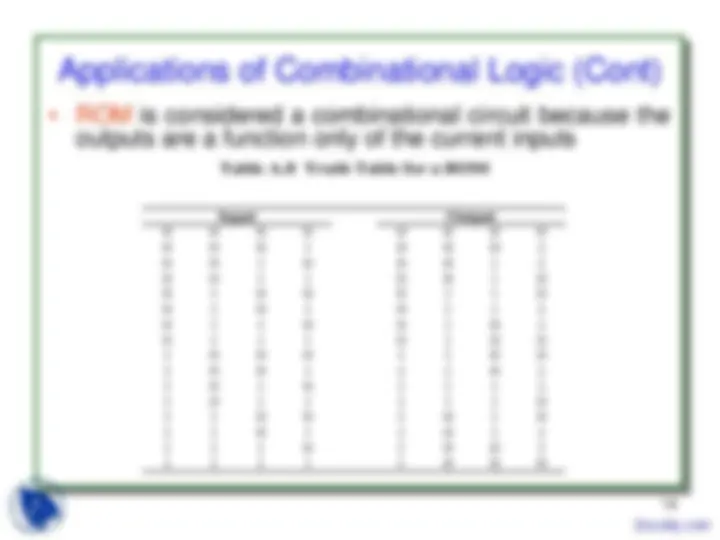
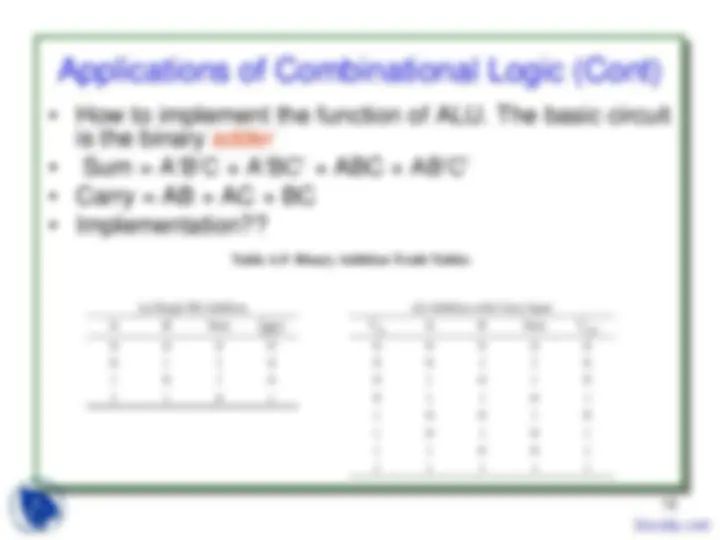
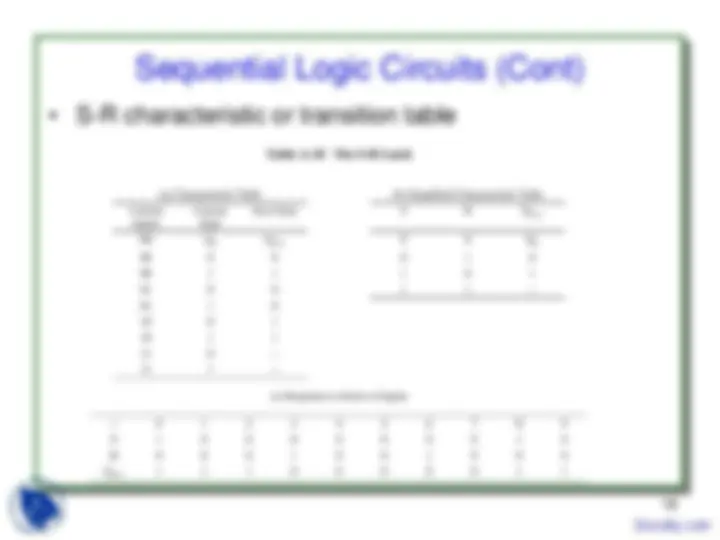
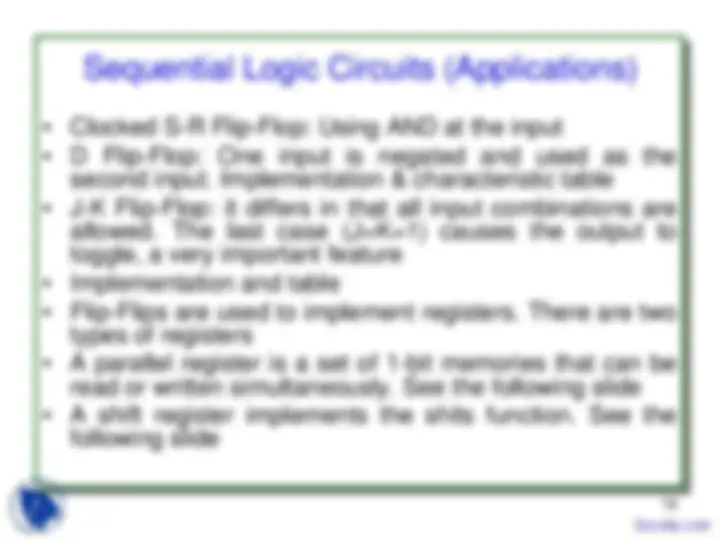
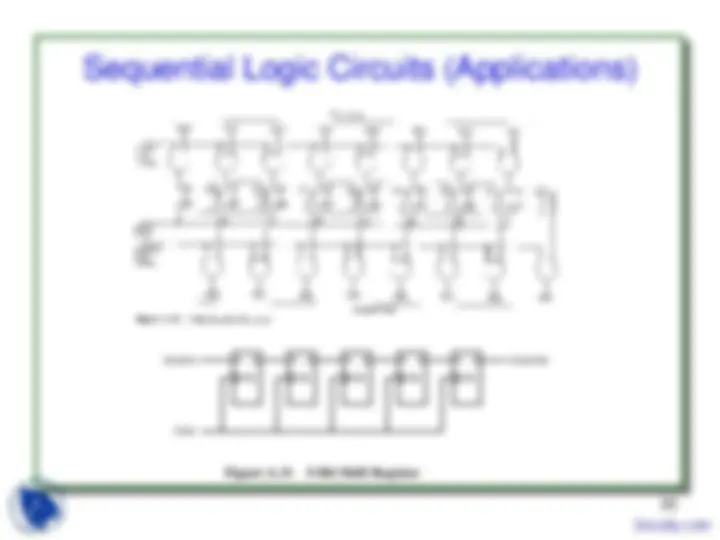
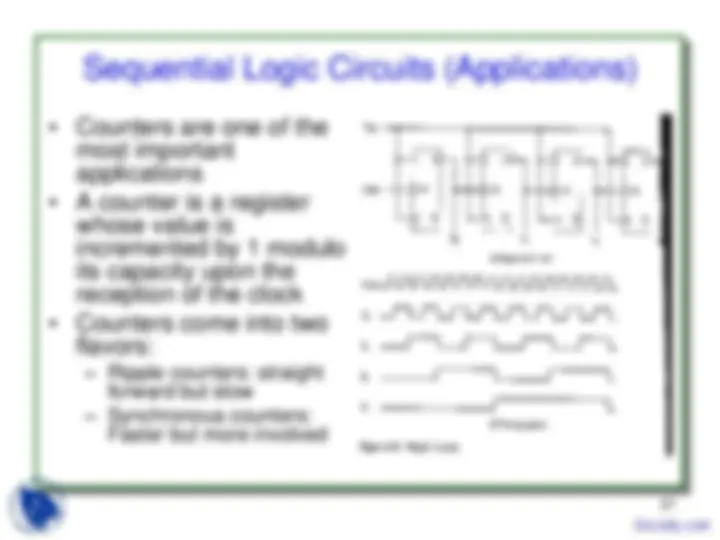
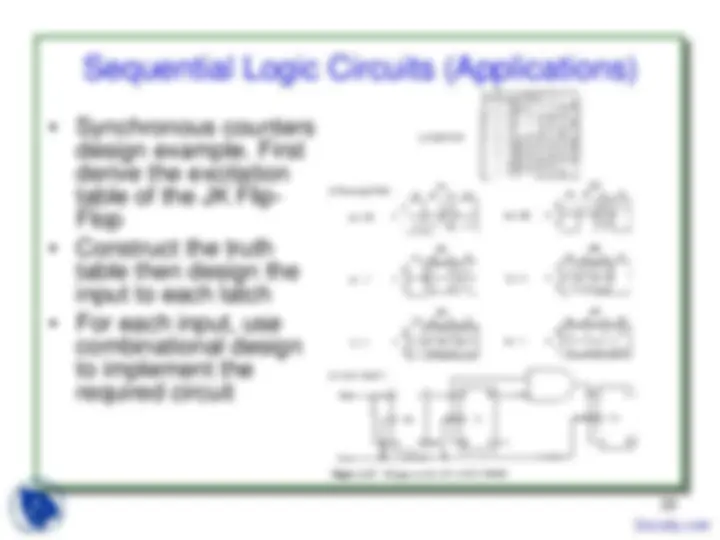


Study with the several resources on Docsity

Earn points by helping other students or get them with a premium plan


Prepare for your exams
Study with the several resources on Docsity

Earn points to download
Earn points by helping other students or get them with a premium plan
Community
Ask the community for help and clear up your study doubts
Discover the best universities in your country according to Docsity users
Free resources
Download our free guides on studying techniques, anxiety management strategies, and thesis advice from Docsity tutors
During the course of work of the microprogramming, we learn the core of the programming. The main points disucss in these lecture slides are:Introduction-Digital-Logic, Boolean Algebra, Gates, Combinational Circuits, Simplifications of Boolean Functions, Multiplexers, Decoders, Sequential Circuits, Set of Postulates, Logic Function, Boolean Equations
Typology: Slides
1 / 22

This page cannot be seen from the preview
Don't miss anything!















1
2
4
5
7
8
n squares (n # of inputs)
10
11
13
14
16
17
19
20